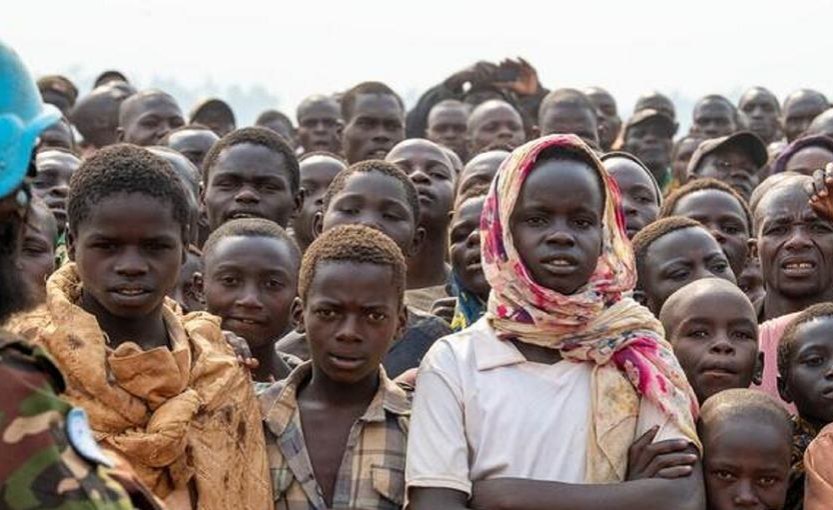Bangkok — ‘The donor base on which the system rests remains shallow and precarious.’
Emergency needs are at historical highs, but available funding has largely flatlined at pre-pandemic levels, according to a new analysis of humanitarian financing.
The Global Humanitarian Assistance report, released this week, is an annual tally of international emergency aid financing, where it comes from, where it goes, and how it gets there. This year’s report – an analysis of funding trends for 2021 – crunches the numbers to show how spending has plateaued, even while humanitarian needs soar.
Also stagnant are long-standing commitments to boost direct funding to local groups.
The report’s authors, the UK-based aid data analysis group Development Initiatives, say the stats show that humanitarian financing has shifted “remarkably little” in recent years; this underscores the “imperative for change” – especially as COVID-19, conflict, and the climate crisis collide.
“The donor base on which the system rests remains shallow and precarious,” the report’s authors wrote.
Here are a few takeaways from the data:
Funding growth has stalled
The topline finding is no surprise to an aid sector that has grown used to unbridgeable funding gaps: The money isn’t keeping up with the needs.
On one hand, the value of international humanitarian assistance reached an estimated $31.3 billion in 2021, according to the report’s calculations. But funding grew by only 2.6 percent between 2018 and 2021 – far lower than the 10-percent annual growth seen before then.
The international financing system is still built around (mostly Western) donor governments: the US, Germany, the UK, Japan, and Sweden remain among the top contributors.
… and the funding gap is widening
UN-backed emergency appeals have reached such record highs (at least $41 billion this year, before Russia’s Ukraine invasion) that aid officials fully expect large funding shortfalls.
Costs and funding are growing even further apart. In 2020 and 2021, UN-backed appeals were roughly half-funded:
Money is going through the same channels (and bypassing local groups)
The more things change, the more they stay the same. The biggest aid donors are the same core group of donor governments, and the money is largely funnelled through the same tiny circle of UN agencies and big international NGOs.
In 2021, the majority of trackable funds went through multilateral organisations, NGOs, and the Red Cross and Red Crescent movement.
The aid sector has made broad commitments to “localise” aid, in part by pledging to boost direct funding to frontline humanitarian groups. International donors have never come close to meeting direct funding promises, but the sector backtracked to a five-year low in 2021: only 1.2 percent of international humanitarian assistance went directly to local NGOs.
There was more progress on other reform commitments. The use of cash aid – giving people cash, instead of goods – continued to grow (to about one fifth of the value of international humanitarian assistance). So did the proportion of overall public funding given to UN-run pooled funds (about 6 percent), which tend to steer more funding to local groups.
There’s money behind the disaster prevention movement
Development funding for disaster risk reduction is growing, reflecting a wider focus on prevention – spurred in no small part by perennial aid shortfalls and the climate crisis.
The report found that official development assistance earmarked for disaster risk reduction (DRR) – the broad doctrine pushing to prevent crises before they erupt – saw a “significant rise”, jumping from $1.6 billion in 2018 to $2.4 billion in 2020.
The trend is likely to continue, as the links between longer-term development and shorter-term emergency aid become clearer: G7 foreign ministers this year promised to use their money to make “the humanitarian system as anticipatory as possible”.
… but this doesn’t mean funding goes where it’s most needed
Countries receiving the largest volumes of DRR funding tend to be at the highest risk of natural hazards, the report noted.
This may sound obvious, but exposure is only one part of what turns a hazard into a crisis: The ability to respond and cope, economic fragility, and conflict risk are all part of the risk equation. The analysis shows countries with the highest overall risk saw a smaller proportion of disaster risk reduction funding.
There’s more money, but gender-related humanitarian action is still underfunded
Funding targeting gender-related humanitarian needs has more than doubled since 2018 – up to $587 million in 2021.
But even when including broader “gender-mainstreamed” funding, it still only adds up to about 3.4 percent of international humanitarian aid, the report found.
And while funding for gender-based violence in particular has quadrupled over the last four years, response costs are also five times higher. Violence against women and girls has soared through the COVID-19 pandemic, but only 29 percent of gender-based violence funding needs were met in 2021 – the lowest proportion in four years, the analysis found.
Edited by Andrew Gully.
Irwin Loy, Asia Editor
Source link

